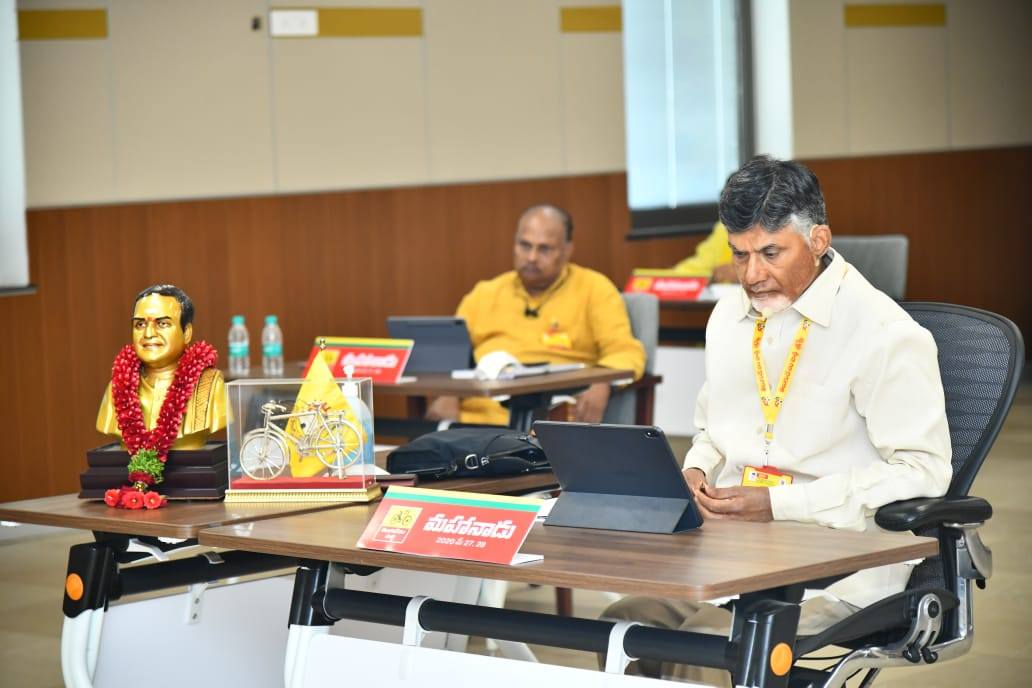Durgi Stone Craft – Get Attractive Idols


Summary: If you are more into arts and crafts, the best thing you can do when you visit Andhra is to take home an idol made under Durgi Stone Craft.
The state of AP is popular not just for the beauty associated with different cities and villages, but she is also well-known for her arts and crafts. Crafts here means handmade crafts and there are artisans in this state, who are specialized in creating different crafts like Kondapalli dolls, leather puppet dolls and they are also good at Durgi Stone Crafts. These crafts are not just popular within the state, but they are popular all over India and abroad as well.
About Durgi Stone Crafts:
In the state of AP, Guntur region is popular for Durgi Stone crafts and these works typify that rich and wealthy cultural heritage of the region. In this district, there is a region called Palnadu and this region has a small town called as Durgi. The stone art is known to have evolved from this small town, thereby having its name during the 15th century. Even though, nowadays, costlier stones like granites are used for production of idols for gods and goddesses, simple, yet effective stones were popular those days and one such stone is Durgi.
Nowadays, many owners of homes and commercial establishments look for cravings that are made in attractive stones like Durgi for placing in their homes and commercial establishments as a symbol of beauty. Even though, Durgi stone is widely used by the dealers for production of smaller idols and paper weights. Durgi town is not just popular for these cultural crafts, but this place is popular for many of its historical sites and religious attractions. Besides smaller items, temple chariots and Hindu temple dome models are also created for decorative purpose with these attractive Durgi stones. Also, the artisans create sculptures in the size of 6-12 inches with these stones. In addition, during the manufacturing process, they make use of small chisels.
What does this art form involve?
Durgi stone art involves the technique of turning the rigid and hard rocks into smaller pieces such that attractive works that can be created in different sizes, shapes, designs and styles for the purchasers to choose from. Generally, we wish to decorate the corners in our home with some attractive pieces of works and in these places Durgi stone crafts can look attractive and can enhance the entire look.
Where to learn about Durgi Stone Craft?
Durgi Village has a few places and schools for making sculptures with Durgi Stone. There are Durgi inhibits in the Nargarjunakonda Museum to showcase the traditional and ancients skills of artisans in making this type of art and sculpture. Artisans in Durgi town still follow the same tradition and technique in creating these artworks that they learned from their ancestors.
Many arts and craft stores in AP has a wide collection of idols made up of Durgi Stone and so purchasers interested in these attractive art pieces can place order appropriately to take home these works.
Vegetable Prices in Vijayawada
Last Updated: 17 May 2016
Tomato (టమాట)

Rythu Bazar - Rs.46/Kg
K.R Market - Rs.75/Kg
Ladies Finger (బెండకాయ)

Rythu Bazar - Rs.25/Kg
K.R Market - Rs.30/Kg
Brinjal (వంకాయ)

Rythu Bazar - Rs.20/Kg
K.R Market - Rs.30/Kg
Potato (బంగాళదుంప)

Rythu Bazar - Rs.21/Kg
K.R Market - Rs.30/Kg
Onion (ఉల్లి గడ్డ)

Rythu Bazar - Rs.13/Kg
K.R Market - Rs.14/Kg
Cucumber (దోసకాయ)

Rythu Bazar - Rs.17/Kg
K.R Market - Rs.25/Kg
Bitter Gourd (కాకరకాయ )

Rythu Bazar - Rs.30/Kg
K.R Market - Rs.42/Kg
Carrot (గాజరగడ్డ)

Rythu Bazar - Rs.35/Kg
K.R Market - Rs.45/Kg
Tindoora (దొండకాయ )

Rythu Bazar - Rs.18/Kg
K.R Market - Rs.25/Kg
Ridge gourd (బీరకాయ )

Rythu Bazar - Rs.28/Kg
K.R Market - Rs.35/Kg
Snake Gourd (పొట్లకాయ )

Rythu Bazar - Rs.10/One
K.R Market - Rs.10/One
Bottle gourd (సొరకాయ)

Rythu Bazar - Rs.10/One
K.R Market - Rs.10/One
Beetroot (బీట్రూట్)

Rythu Bazar - Rs.30/Kg
K.R Market - Rs.40/Kg
Drumstick (ములగకాడ )

Rythu Bazar - Rs.3/One
K.R Market - Rs.5/One
Plantain (అరటికాయ )

Rythu Bazar - Rs.3/One
K.R Market - Rs.5/One
Chilli (మిరపకాయ )

Rythu Bazar - Rs.32/Kg
K.R Market - Rs.40/Kg
Big Chilli (బజ్జీ మిరపకాయ )

Rythu Bazar - Rs.30/Kg
K.R Market - N/A
Cauliflower (కోసు పువ్వు)

Rythu Bazar - Rs.12/One
K.R Market - Rs.15/One
Cabbage (క్యాబేజీ)

Rythu Bazar - Rs.9/Kg
K.R Market - Rs.14/Kg
Cluster Beans (గోరు చిక్కుడు)

Rythu Bazar - Rs.20/Kg
K.R Market - Rs.20/Kg
Eggplant (గుత్తి వంకాయ)

Rythu Bazar - Rs.12/Kg
K.R Market - Rs.18/Kg
Broad Beans (చిక్కుడుకాయ)

Rythu Bazar - Rs.30/Kg
K.R Market - Rs.42/Kg
Yam (కంద గడ్డ)

Rythu Bazar - Rs.20/Kg
K.R Market - Rs.28/Kg
Colacasia (చేమదుంప)

Rythu Bazar - Rs.16/Kg
K.R Market - Rs.25/Kg
Pumpkin (గుమ్మడికాయ )

Rythu Bazar - Rs.18/Kg
K.R Market - Rs.30/Kg
Teisel gourd (ఆకాకరకాయ)

Rythu Bazar - Rs.52/Kg
K.R Market - Rs.60/Kg
Courgelet (కీరదోసకాయ)

Rythu Bazar - Rs.12/Kg
K.R Market - Rs.20/Kg
Beans (బీన్స్)

Rythu Bazar - Rs.42/Kg
K.R Market - Rs.45/Kg
Capsicum (కాప్సికం)

Rythu Bazar - Rs.40/Kg
K.R Market - Rs.45/Kg
Sweet Potato (చిలకడ దుంప)

Rythu Bazar - Rs.14/Kg
K.R Market - Rs.25/Kg
Lemon (నిమ్మకాయ)

Rythu Bazar - Rs.10/Dozen
K.R Market - Rs.12/Dozen
Papaya (బొప్పాయి)

Rythu Bazar - Rs.20/One
K.R Market - N/A
Mango (పచ్చి మామిడి)

Rythu Bazar - Rs.10/One
K.R Market - Rs.15/One
Peanut (వేరుశెనగ)

Rythu Bazar - Rs.50/Kg
K.R Market - Rs.52/Kg
Coconut (కొబ్బరికాయ)

Rythu Bazar - Rs.15/One
K.R Market - Rs.15/One
Leafy Veg. (తోటకూర,పాలకూర, మెంతికూర)

Rythu Bazar - Rs.2/One
K.R Market - Rs.2.5/One
Sorrel leaves (గోంగూర)

Rythu Bazar - Rs.40/Kg
K.R Market - Rs.40/Kg
Coriander leaves (కొత్తిమీర)

Rythu Bazar - Rs.6/One
K.R Market - Rs.10/One
Mint leaves (పూదిన)

Rythu Bazar - Rs.2/One
K.R Market - Rs.3/One
Radish (ముల్లంగి)

Rythu Bazar - Rs.5/One
K.R Market - Rs.6/One
Curry leaves (కరివేపాకు)

Rythu Bazar - N/A
K.R Market - N/A
Ash Gourd (బూడిద గుమ్మడికాయ )

Rythu Bazar - Rs.15/Kg
K.R Market - Rs.40/Kg
Gooseberry (ఉసిరికాయ)

Rythu Bazar - Rs.38/Kg
K.R Market - Rs.40/Kg
Ginger (అల్లం)

Rythu Bazar - Rs.38/Kg
K.R Market - Rs.50/Kg
Sweet Corn (మొక్కజొన్న)

Rythu Bazar - Rs.7/One
K.R Market - Rs.7/One
Garlic (వెల్లుల్లి)

Rythu Bazar - N/A
K.R Market - N/A
Information about Guntur Railway Station


Summary: Some people have great attraction towards trains and if you are one such individual, it is better to get to know some details about Guntur Railway Station.
Guntur Junction is the important railway station that connects different cities in the state located in the city of Guntur and it belongs to the Guntur Railway division. Of course, as the name implies it is standing prestigiously in the Guntur District of the AP state. It is the divisional headquarters of the Guntur division and it is also the central station in the city. Of course, like many other railway stations in southern India, it belongs to the South Central Railway Zone of Indian Railways.
Terminals in the station:
There are east and west terminals each with their counters for booking train tickets. There is an interconnected subway system in the railway station through which all the 7 platforms in the station are connected to each other. It is the largest and busiest station in the Guntur division and it is making yearly revenue of more than 1.5 million US Dollars.

History of the station:
The first rail lines in the Guntur railway station was the meter gauge line. This was done in the year 1916 between the Guntur-Repalle sections. Later, same type of line was laid between the Guntur and Hubli/Goa. The meter gauge was then converted in the broad gauge railway line and this was done between Guntur and Vijayawada railway stations towards Howrah and this was done after the construction the Prakasam Barrage in Vijayawada on the eminent Krishna River. By the end of the 20th century, this railway station had more varied railway lines for enabling trains to pass through the railway station, which is called as Guntur Junction.
Divisional headquarters:
Under the Indian Railways, more than 60 railway divisions are functioning and Guntur Railway Division is one among them. This division comprises of railway lines running across 4 districts of the state of AP. It has a few important and many small and medium stations across the region. The head office of the division is functioning from the Pattabhipuram area of the city of Guntur.
Nearby railway stations:
The other railway stations located close to the city terminal include:
- Nallapadu
- Nambur
- Pedakurapadu
- Tenali
There are other stations in rural area of the district and these stations are used by daily vendors for transporting milk and dairy products and they are Perecherla and Vejendla.

To ease the traffic of trains in Guntur Junction, another important transit point was constructed in the Guntur Division mainly for taking care of freight services and it is called as New Guntur, which is located near Reddi Palem.
According to the 2013-14 statistics, 26.8 million people are using the trains passing through the Guntur Railway Division. When this is the case of passengers, reports further add that 2.8 million tonnes of freight forwarding was done during the year 2013-14.
A model train that stands in the West Terminal of the Guntur Junction makes this station even more attractive, besides the best maintenance.






